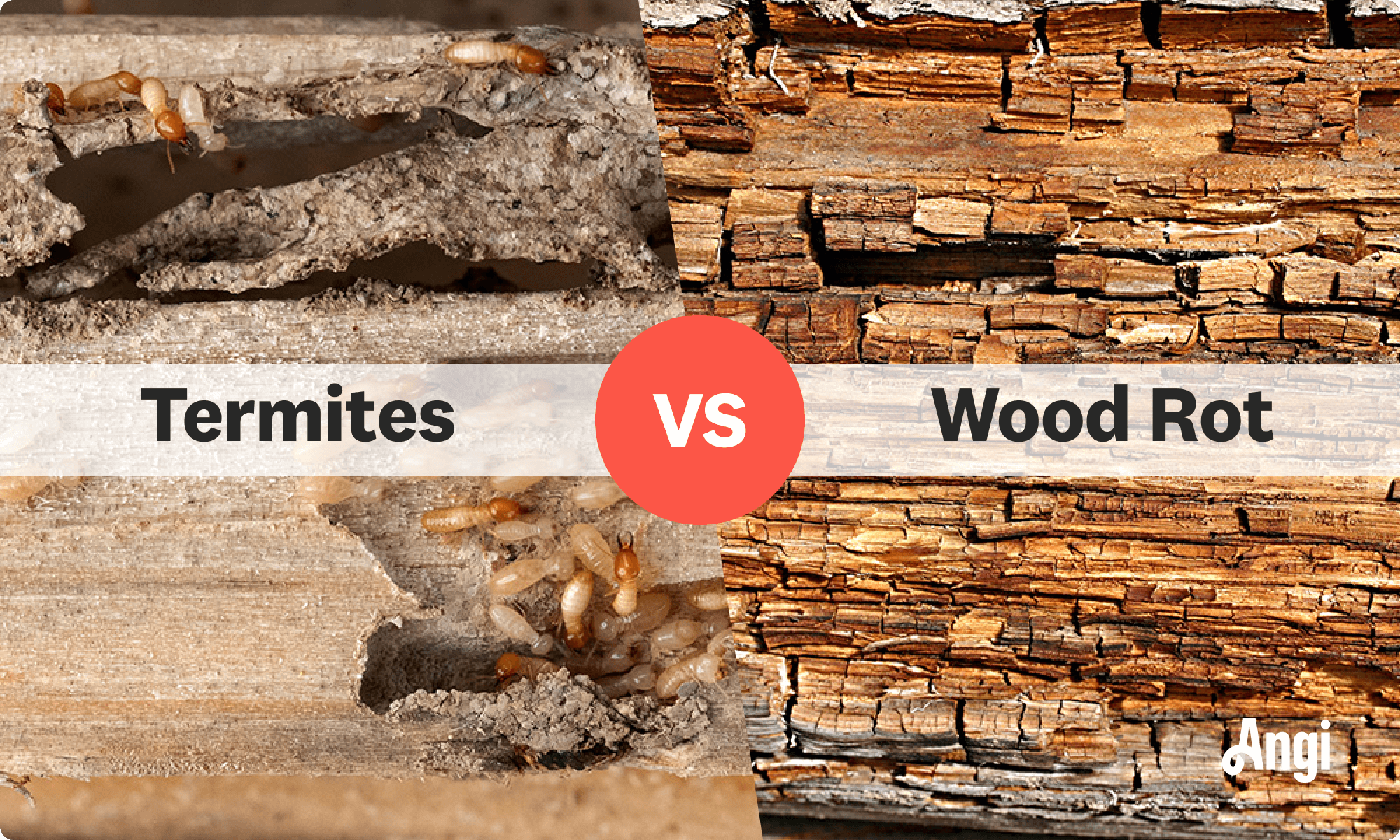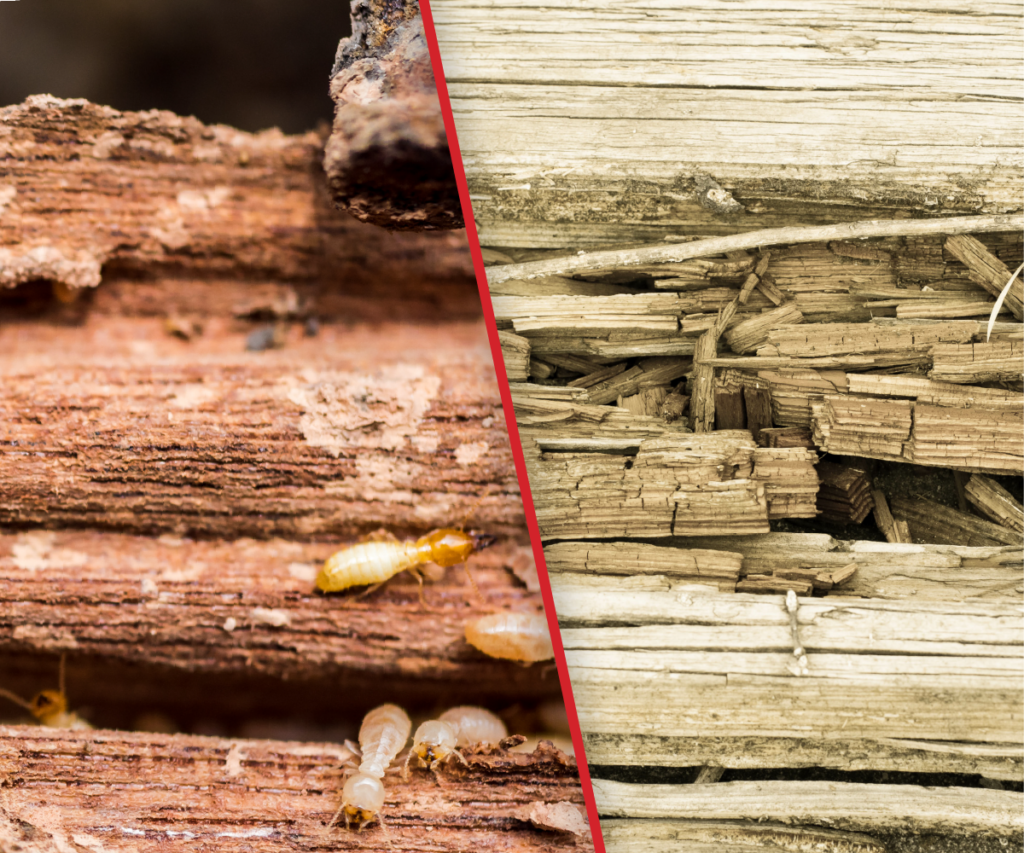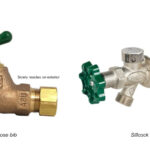Imagine spotting mysterious damage on your wooden furniture or the beams in your attic. You might wonder, is it wood rot or termite damage?
Both can silently wreak havoc in your home, but knowing the difference can save you time and money. It’s more than just a surface issue; it’s about protecting your investment and ensuring your family’s safety. By understanding what you’re dealing with, you can take the right steps to fix the problem before it spirals out of control.
This article will guide you through identifying and addressing these common household issues, helping you preserve the beauty and integrity of your home. Stay with us to discover the telltale signs and effective solutions that will keep your living space secure and sound.
Causes Of Wood Rot
Wood rot stems from moisture and fungal growth, leading to weakened structures. Unlike termite damage, which involves insects eating wood, rot results from decay and not pests. Understanding these differences can help in proper wood maintenance.
Understanding the causes of wood rot is crucial in preventing damage to your home or any wooden structures. Wood rot is a sneaky problem, often going unnoticed until significant damage has occurred. It can be as destructive as termite damage, but unlike termites, wood rot doesn’t move. It stays in one place, relentlessly eating away at the structure. But what causes this silent destroyer? Let’s dive into the primary culprits.Moisture And Fungi
Moisture is the biggest enemy of wood. Wood is like a sponge; it absorbs water easily. When moisture levels rise, fungi take advantage of the damp environment. Fungi are natural decomposers. They thrive in wet conditions and break down the cellulose in wood. This process weakens the wood, causing it to crumble over time. Think about that time you left a wooden item outside in the rain. You probably noticed how it started to deteriorate. That’s the destructive power of moisture and fungi combined.Environmental Conditions
Environmental conditions play a big role in wood rot. High humidity, frequent rainfall, and poor ventilation can create the perfect storm for rot. Wood that is in contact with soil is more prone to moisture retention, leading to rot. Ensure that your wood structures are properly elevated and ventilated. Consider the climate you live in. If it’s particularly damp, your wood structures might be at higher risk. Have you checked your attic or basement lately? These areas often harbor the conditions that promote wood rot. Understanding these causes will help you protect your wooden structures. Regular inspections and maintenance can prevent costly repairs. What steps can you take today to safeguard your home from wood rot?
Credit: www.angi.com
Signs Of Wood Rot
Wood rot is a silent destroyer of wooden structures. It sneaks in and weakens the wood from within. Identifying signs of wood rot early can save your home from serious damage. Understanding the symptoms helps in taking timely action. Let’s explore the common signs of wood rot.
Discoloration And Softness
Wood affected by rot often changes color. It may turn dark or appear bleached. These changes signal damage beneath the surface. Softness is another key indicator. Press the wood gently. If it feels spongy or crumbly, rot might be present. Healthy wood should feel firm and solid.
Musty Odor
Rotting wood often emits a distinct smell. It resembles the scent of damp basements. This musty odor arises from mold and mildew growth. Such smells indicate moisture has infiltrated the wood. This condition is ideal for fungal growth. Addressing the source of the moisture is crucial. It helps in preventing further rot and odor.
Causes Of Termite Damage
Termite damage can be a homeowner’s nightmare. Understanding its causes is crucial. Termites feed on cellulose found in wood. This leads to structural damage over time. Knowing what attracts termites helps in preventing infestations.
Termite Species
Different termite species cause varying levels of damage. Subterranean termites are the most common in homes. They create tunnels and mud tubes to reach wood. Drywood termites live within the wood they consume. They cause damage without needing soil contact. Formosan termites are aggressive and cause rapid destruction. Identifying the species helps in choosing the right treatment.
Structural Vulnerabilities
Structures with moisture issues attract termites easily. Leaky roofs or poor drainage can create damp wood. Termites thrive in such conditions. Cracks in foundations or walls provide entry points. Untreated wood in contact with soil is at risk. Regular inspections help identify vulnerabilities early. Proper maintenance can reduce the risk of infestations.
Signs Of Termite Damage
Termite damage can wreak havoc on your home. Knowing the signs is crucial. Early detection can prevent extensive repairs. Termites are silent destroyers. They often go unnoticed until severe damage occurs. Understanding the signs can save money and stress.
Mud Tubes
Mud tubes are a clear sign of termite activity. Termites build these tubes for protection. They use them to travel to and from food sources. Mud tubes are often found on foundation walls. Look for them in crawl spaces. They are about the width of a pencil. Break a tube and inspect it. Active termites may be inside.
Hollowed Wood
Hollowed wood is another indicator of termite damage. Tap on wood surfaces with a screwdriver. A hollow sound suggests termites have eaten the wood. Termites consume wood from the inside out. The surface may look fine. The interior can be severely compromised. Check wooden structures regularly. Pay attention to floors, beams, and furniture.
Visual Differences
Identifying the difference between wood rot and termite damage can be tricky. They both harm wood, but their visual signs differ. Understanding these differences helps in addressing the problem effectively. This section highlights the visual differences between wood rot and termite damage.
Surface Appearance
Wood rot often appears soft and spongy. The surface might have a discolored and sunken look. You may see cracks or splits along the grain. In contrast, termite damage usually involves clean, neat galleries. Their work is rarely visible on the wood’s surface. Termites keep their tunnels hidden inside the wood.
Internal Damage Patterns
Inside, wood rot consumes the wood’s fibers. It leaves behind a brittle, powdery residue. This internal decay weakens the wood’s structure. Termites, on the other hand, create hollowed-out sections. They eat the wood from the inside out. Internal termite damage looks like a maze of tunnels.
Impact On Structures
Wood rot and termite damage significantly harm structures. Wood rot results from moisture, causing decay and weakening timber. Termites silently eat wood from the inside, leading to structural instability. Both issues require urgent attention to prevent costly repairs and ensure safety.
Understanding the impact of wood rot and termite damage on structures is crucial for homeowners and builders alike. Both can severely compromise the safety and stability of your home. But how do they differ in their impact on the structural integrity and safety of a building? Let’s dive deeper into these critical aspects.Structural Integrity
Wood rot and termite damage both undermine the structural integrity of a building, but they do so in different ways. Wood rot is typically caused by fungi, which thrive in moist environments. This process can weaken wood fibers, leading to soft, crumbly wood. On the other hand, termites consume wood from the inside out, often without immediate visible signs. This makes it tricky to detect until significant damage has occurred. A friend of mine once discovered termite damage only after a section of her deck collapsed. It was a costly surprise that taught her the importance of regular inspections. Both issues can lead to sagging floors, warped walls, and weakened beams. These problems can escalate quickly if not addressed. Have you ever checked your home for these signs? Regular maintenance can save you from unexpected repairs.Safety Concerns
Safety is a major concern when it comes to wood rot and termite damage. Compromised structures can pose serious risks, including the potential for collapse. Imagine walking across a floor that suddenly gives way—it’s a danger no one wants to face. Wood rot can be particularly insidious in areas like attics or basements. These spaces are often out of sight and mind, yet they play a critical role in supporting the structure above. Have you checked these areas in your home recently? Termites, while small, can cause massive damage if left unchecked. They often attack load-bearing walls and supports, threatening the very foundation of your home. Regular pest control inspections can help prevent these tiny invaders from becoming a big problem. By understanding the impact on structural integrity and safety, you can take proactive steps to protect your home. Regular inspections and maintenance are key. How often do you inspect your home for these issues? It’s a question worth considering for the safety and longevity of your living space.Prevention Strategies
When it comes to preserving the longevity of your wooden structures, understanding the difference between wood rot and termite damage is crucial. But knowing how to prevent these issues can save you time and money. Let’s dive into some key prevention strategies that can keep your home safe from these destructive forces.
Moisture Control
Moisture is a silent enemy, often inviting wood rot into your home. To combat this, ensure your home has proper ventilation. Areas like basements, attics, and bathrooms are particularly susceptible.
Installing exhaust fans can help reduce humidity levels. Regularly check for leaks in plumbing and roofs. Fixing these small problems promptly prevents moisture build-up.
Think about using dehumidifiers in rooms that naturally retain more moisture. Keeping your home dry not only prevents rot but also deters termites, who are drawn to damp wood.
Termite Barriers
Physical termite barriers are your first line of defense. Consider installing stainless steel mesh or sand barriers during construction. These materials can block termites from entering your home.
Chemical barriers offer another layer of protection. Applying termiticides around the foundation creates a chemical shield. These substances can deter and even kill termites upon contact.
Regular inspections by pest control professionals can ensure these barriers remain effective. They can spot early signs of infestation, allowing for quick intervention before significant damage occurs.
Have you ever thought about how a small termite colony could silently compromise the safety of your home? Taking action now can prevent future headaches. What prevention strategy will you start with today?

Credit: www.cedtechnologies.com
Repair And Treatment
Addressing wood rot and termite damage is essential for maintaining a safe home. Each issue demands different repair and treatment strategies. Understanding these can save time and money. Let’s explore effective methods for each problem.
Wood Rot Restoration
Wood rot weakens structures, threatening safety. Begin restoration by identifying affected areas. Remove damaged wood completely. Use a chisel or saw for precision. After removal, treat the area with a wood preservative. This prevents future rot. Allow the preservative to dry thoroughly. Next, fill gaps with wood filler. Choose a filler that matches the original wood color. Sand the surface smooth once the filler dries. Finally, apply a sealant or paint. This protects against moisture intrusion.
Termite Extermination
Termites cause severe damage if left unchecked. Early extermination is crucial. Begin with a thorough inspection. Identify termite colonies and affected areas. Use bait stations to attract and kill termites. These stations contain poison that termites carry back. Alternatively, apply liquid termiticides around the home’s foundation. This creates a barrier against termites. Consider professional pest control services for severe infestations. They offer specialized treatments and expertise. Regular inspections can prevent future termite issues.
Professional Assessment
Identifying wood rot and termite damage can be tricky. Both problems affect the wood’s integrity, leading to costly repairs. A professional assessment helps pinpoint the exact issue. Experts use advanced tools and techniques to differentiate between these damages. This ensures effective treatment and prevention strategies.
When To Seek Help
Notice changes in your wood’s appearance? Seek professional help. Discoloration, softness, or a musty smell may indicate wood rot. Mud tubes or hollow sounds suggest termite activity. Delay can worsen the damage. Quick action prevents further structural issues. Professionals can assess and address the problem accurately.
Choosing The Right Expert
Choosing the right expert ensures thorough inspection and repair. Look for professionals with certifications in pest control or wood restoration. Verify their experience with similar cases. Check reviews and testimonials. A knowledgeable expert provides effective solutions. They can differentiate between wood rot and termite damage.

Credit: www.dodsonbros.com
Frequently Asked Questions
What Causes Wood Rot In Homes?
Wood rot is caused by fungi. Moisture and warmth help fungi grow and damage wood.
How Can I Identify Termite Damage?
Look for hollow-sounding wood. Mud tubes and discarded wings also indicate termite activity.
Is Wood Rot More Common Than Termite Damage?
Wood rot is common in damp areas. Termites are more common in warmer climates.
Can Wood Rot And Termite Damage Occur Together?
Yes, they can occur together. Moisture attracts both fungi and termites, leading to joint damage.
How Do I Prevent Wood Rot And Termite Damage?
Keep wood dry. Regularly inspect your home. Use treated wood to prevent damage.
Conclusion
Recognizing wood rot and termite damage is crucial for home upkeep. Wood rot results from moisture, creating soft, weakened wood. Termite damage stems from these insects eating wood, leaving hollow spaces. Both issues threaten your home’s structure. Regular checks can prevent severe damage.
Always repair affected areas quickly. Keep your home dry to avoid wood rot. Consider pest control for termites. Protect your investment. Be proactive with maintenance. Save yourself stress in the long run. Your home deserves a strong foundation. Keep it safe and sound.




